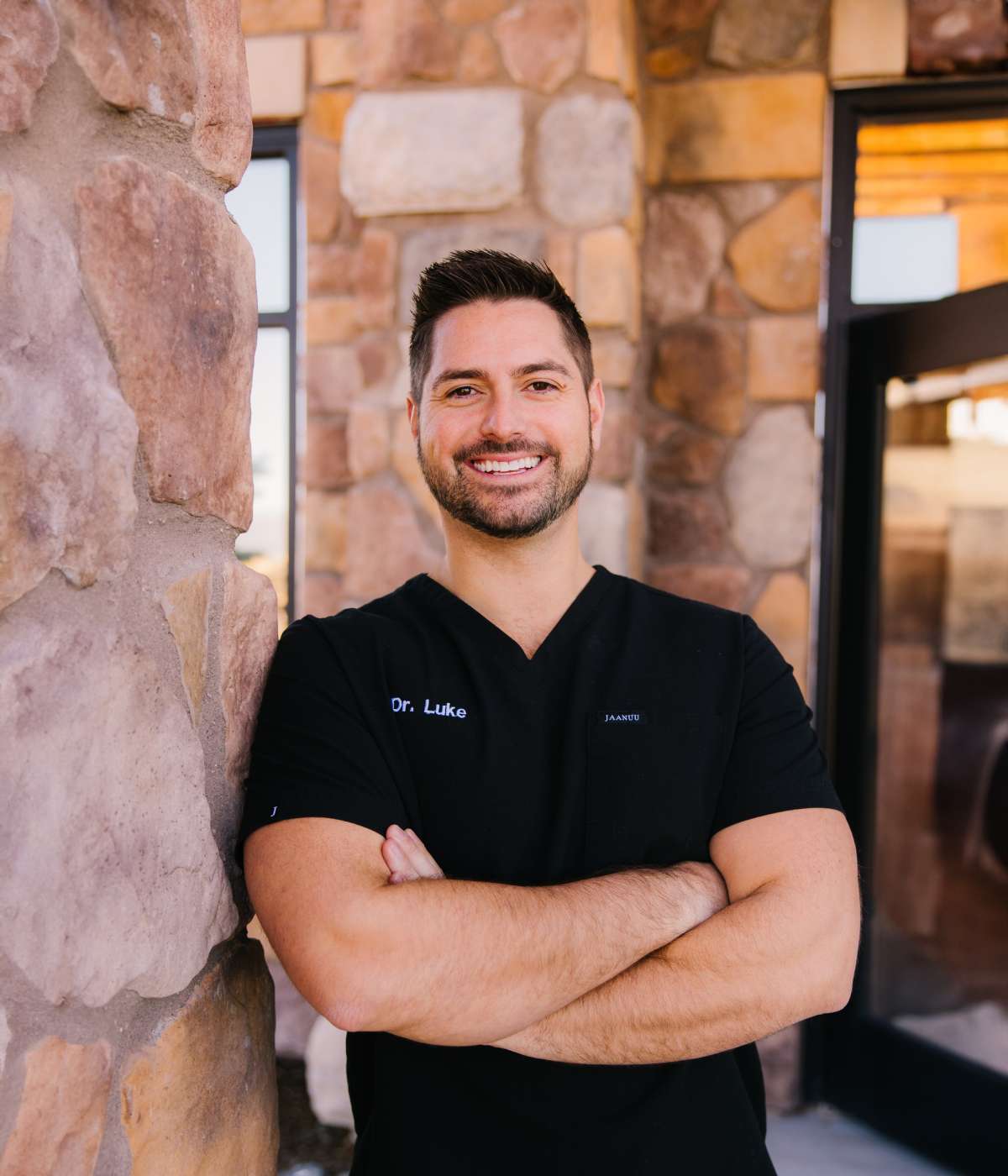Pediatric Dentistry
Your Smile Headquarters
Expert Care for
Growing Teeth
At Smile Orthodontics & Pediatric Dentistry, we specialize in early detection of growth and developmental issues to ensure your child enjoys a healthy, beautiful smile for life.
Since 2008, we’ve proudly served families in Colorado Springs, Monument, and Aurora, CO. Get started by requesting a pediatric dentistry exam today. We look forward to meeting you and your family soon!

Request appointment
select affordable treatment
Sit Back, Relax & Get Started!
What Sets Our Smiles Apart


Our team is trained to identify growth and developmental problems early and create life-long, healthy, beautiful, confident smiles for our patients.
Our mission is our way of life…our highly trained team treats all patients and parents as they’d like to be treated and as they’d like their children treated.
Our team is trained to identify growth and developmental problems early and create life-long, healthy, beautiful, confident smiles for our patients.
Our mission is our way of life…our highly trained team treats all patients and parents as they’d like to be treated and as they’d like their children treated.
Meet Our Dentists
Our team of specialists highly value training and education to continue growing and learning new ways to serve all of our patients, especially those with the littlest smiles!

Dr. Joshua Erickson
Orthodontist & Pediatric Dentist, DDS MSD

Dr. Luke Carubia
Pediatric Dentist, DDS, MS, MBA

Dr. Clark (Cubby) Taylor
Orthodontist & Pediatric Dentist, DDS MS

Dr. Anila Poravanthattil
Pediatric Dentist, DDS

Dr. Elizabeth Shick
Pediatric Dentist, DDS, MPH

Dr. Amanda Tompkins
Orthodontist, DDS MS

Your Child’s
First Check-Up
We follow the recommendation of the American Academy of Pediatric Dentistry that a child’s first dental visit be scheduled by his/her first birthday.
Starting early allows your child to see our warm and cozy environment, build trust, and put them at ease for future dental visits. We will also review the importance of maintaining a good dental health program with you and your child to ensure a healthy and beautiful smile for life!
Pediatric Dental Services
We provide treatments that are designed to prevent cavities, strengthen enamel, protect from damage, and much more. We offer a wide variety of services to ensure your child has the happiest and healthiest smile possible!
You have so many good reasons to keep your family’s teeth and gums healthy. Their sparkling smiles. Being able to chew for good nutrition. Avoiding toothaches and discomfort. New research suggests that gum disease can lead to other problems in the body, including an increased risk of heart disease.
Fortunately, there are simple ways to keep teeth strong and healthy from childhood to old age. Here’s how:
Tooth Decay Prevention
Tooth decay is a progressive disease resulting in the interaction of bacteria that naturally occur on the teeth and sugars in the everyday diet. Sugar causes a reaction in the bacteria, causing it to produce acids that break down the mineral in teeth, forming a cavity. Dentists remove the decay and fill the tooth using a variety of fillings, restoring the tooth to a healthy state. Nerve damage can result from severe decay and may require a crown (a crown is like a large filling that can cap a tooth, making it stronger or covering it). Avoiding unnecessary decay simply requires strict adherence to a dental hygiene regimen: brushing and flossing twice a day, regular dental checkups, diet control, and fluoride treatment. Practicing good hygiene avoids unhealthy teeth and costly treatment.
Sealants
The grooves and depressions that form the chewing surfaces of the back teeth are extremely difficult (if not impossible) to clean of bacteria and food. As the bacteria reacts with the food, acids form and break down the tooth enamel, causing cavities. Recent studies indicate that 88 percent of total cavities in American schoolchildren are caused this way.
Tooth sealants protect these susceptible areas by sealing the grooves and depressions, preventing bacteria and food particles from residing in these areas. Sealant material is a resin typically applied to the back teeth, molars, premolars, and areas prone to cavities. It lasts for several years but needs to be checked during regular appointments.
Fluoride
Fluoride is a substance that helps teeth become stronger and resistant to decay. Regularly drinking water treated with fluoride and brushing and flossing regularly ensures significantly lower cavities. Dentists can evaluate the level of fluoride in a primary drinking water source and recommend fluoride supplements (usually in tablets or drops), if necessary.
Thumb-Sucking
Sucking is a natural reflex that relaxes and comforts babies and toddlers. Children usually cease thumb-sucking when the permanent front teeth are ready to erupt. Typically, children stop between the ages of 2 and 4 years. Thumb sucking that persists beyond the eruption of primary teeth can cause improper growth of the mouth and misalignment of the teeth. If you notice prolonged and/or vigorous thumb-sucking behavior in your child, talk to your dentist.
Here are some ways to help your child outgrow thumb-sucking:
- Don’t scold a child when they exhibit thumb-sucking behavior; instead, praise them when they don’t thumb-suck.
- Focus on eliminating the cause of anxiety — thumb sucking is a comfort device that helps children cope with stress or discomfort.
- Praise them when they refrain from the habit during difficult periods.
- Place a bandage on the thumb or a sock on their hand at night.
Brushing
Parents should be involved in brushing their children’s teeth until age 10. We recommend using a toothbrush with soft bristles and a grain of rice-sized amount of fluoride toothpaste twice daily.
When you brush teeth, move the brush in small circular motions to reach food and plaque that may be under the gum line. Hold the toothbrush at an angle and brush slowly and carefully, covering all areas between the teeth and the surface of each tooth. It will take you several minutes to thoroughly brush the teeth. Do not forget to brush the tongue and the roof of the mouth before rinsing. Mouth rinsing with alcohol-free fluoride and/or anti-bacterial rinse can only be beneficial as long as your child will not swallow it.
Please use logic and wisdom regarding temporary toothpaste fads such as coconut oil and charcoal. We respect all parent’s choices for hygiene. Well-meaning parents who use alternative methods of cleaning their children’s teeth are often disappointed when they discover most of these children require restorative care early and often due to decay and infection.
Flossing
For areas between the teeth that a toothbrush can’t reach, dental floss is used to remove food particles and plaque. Dental floss is a thin thread of waxed nylon that is used to reach below the gum line and clean between teeth. It is very important to floss between your teeth every day.
Pull a small length of floss from the dispenser. Wrap the ends of the floss tightly around your middle fingers. Guide the floss between all teeth to the gum line, pulling out any food particles or plaque. Unwrap clean floss from around your fingers as you go, so that you have used the floss from beginning to end when you finish. Floss behind all of your back teeth.
Floss at night to make sure your teeth are squeaky clean before you go to bed. When you first begin flossing, your gums may bleed a little. If the bleeding does not go away after the first few times, let a team member know at your next appointment.
Crowns
Dental crowns are protective coverings that are placed over a tooth that has been significantly damaged or decayed. In pediatric dentistry, crowns are often used when a cavity is too large for a filling, or if the tooth is weak and needs extra protection. At SMILE, we provide both stainless steel and white zirconia crowns, tailored to your child’s specific needs.
Our expert team ensures that the process is comfortable and stress-free for your little one. Remember, a dental crown not only restores the function of the tooth but also prevents further damage, ensuring your child’s future oral health.
Fillings
Fillings are used to treat cavities or minor tooth decay. At SMILE, we utilize tooth-colored composite fillings that blend seamlessly with your child’s natural teeth, making them virtually undetectable. The procedure involves removing the decayed part of the tooth and filling it with the composite material.
Our team is skilled in making the process as painless as possible. We understand that dental procedures can be intimidating for children, so we strive to create a relaxed, friendly environment where your child feels safe and comfortable.
Whether your child needs a crown or a filling, you can trust the team at SMILE Orthodontics & Pediatric Dentistry to provide the highest level of care. We’re committed to making your child’s dental experience positive while helping them maintain a beautiful, healthy smile. Request an exam with us today — we’re excited to be a part of your child’s journey towards optimal oral health!
We believe in the power of fluoride to help keep children’s teeth strong and healthy. Fluoride is a natural mineral that can significantly increase the resistance of teeth to decay. Regularly consuming fluoride-treated water and maintaining a consistent brushing and flossing routine are foundational steps in promoting oral health and reducing cavities.
In addition to these at-home practices, we offer professional fluoride treatments at our clinic, specifically designed for children. These treatments contain a higher concentration of fluoride than what is typically found in tap water or toothpaste. Your dentist applies a fluoride varnish to your child’s teeth after a thorough cleaning. This process is quick, painless, and often enjoyed by children due to the variety of fun flavors we offer.
The benefits of in-office fluoride treatments extend beyond what regular at-home care can provide. These treatments can not only prevent new cavities but can also halt the progression of existing ones and even reverse early signs of tooth decay. This means fewer fillings, less discomfort, and ultimately, a healthier, happier smile for your child.
However, it’s important to remember that while fluoride is an excellent tool in preventative dental care, it doesn’t replace daily brushing and flossing. Encourage your child to maintain good oral hygiene habits at home, and schedule regular check-ups with our team.
Residents of the Colorado Springs area have benefited over the years from naturally occurring fluoride in the drinking water which hardens tooth enamel and increases caries resistance. However, the levels of fluoride in our drinking water vary greatly in different parts of our city. Consult with our doctors if you are wondering about the level in your neighborhood.
A sealant is a clear or shaded white plastic material that is applied to the chewing surfaces (grooves) of the back teeth (premolars and molars), where 80% of decay happens on adult teeth. The sealant acts as a barrier to food, plaque, and acid, thus protecting the decay-prone areas of the teeth. Studies have shown that sealants can reduce tooth decay by as much as 90%.
The American Dental Association (ADA) recommends that sealants be placed as soon as the first adult molars come in at age 6 or 7. Sealants should continue to be used as each adult molar tooth appears in the mouth.
At SMILE, we understand that saying goodbye to a tooth can seem like a big adventure for a little one. We’re here to make the journey as easy and comfortable as possible. Our team of friendly experts uses gentle methods and a soft touch during the procedure. We’ll explain every step in kid-friendly terms, turning a potentially daunting experience into an understandable and even exciting one.
Why Tooth Extractions Are Sometimes Necessary
There are a few reasons why a tooth might need to wave goodbye early. Sometimes, a tooth gets an “ouchie” that’s too big for a filling or crown to fix. Other times, a tooth might not be playing nice with its neighbors, causing crowding or misalignment. And sometimes, baby teeth don’t want to leave the party on time, preventing adult teeth from making their grand entrance.
After The Extraction
Once the tooth has been gently extracted, our team will provide all the necessary guidance for at-home care. This might include a little rest, soft foods for a few days, and a special way of cleaning the teeth. Before you know it, your child will be back to their normal routine, with a healthier smile!
At SMILE, we believe in creating positive dental experiences for children. We’re committed to providing compassionate, comprehensive care and ensuring your child feels safe and comfortable every step of the way. If you have any questions about tooth extractions or any other aspect of your child’s oral health, please don’t hesitate to reach out to us.
We understand that the health of your child’s smile is paramount, and sometimes, that means going beneath the surface to ensure their teeth are strong and healthy. One such treatment we offer is called a Pediatric Nerve Treatment, also known as a baby root canal.
What Is A Pediatric Nerve Treatment?
Just like a tree, teeth have roots too! Inside these roots are tiny passageways housing delicate tissues called pulp, which can sometimes become unwell due to deep cavities or injury. A Pediatric Nerve Treatment is a special procedure we use to help these tissues feel better.
The Journey To A Happy Tooth
We know the term ‘root canal’ might sound like a big adventure for a small person, but at SMILE, we’re experts in making this journey as comfortable and stress-free as possible.
Our friendly team will explain the process using kid-friendly language, transforming an unfamiliar experience into an understandable one. We’ll ensure your little one is relaxed and comfortable before we gently remove the unwell pulp from the tooth. Then, we fill the empty space with a special material and cap it off with a crown to protect it.
This procedure helps save the natural tooth, maintaining the space needed for future permanent teeth and ensuring proper chewing and speech development. Remember, a healthy baby tooth today paves the way for a healthy adult tooth tomorrow!
Post-Treatment Care
After the treatment, we’ll provide easy-to-follow instructions for at-home care. Your child may need to enjoy soft foods for a few days, but they’ll be back to their normal routine in no time!
Nitrous Oxide, often referred to as “laughing gas,” is a mild sedative that helps children relax during their dental procedures. Despite its nickname, it doesn’t necessarily make children laugh, but it does help ease any worry or discomfort they might feel. It’s been used in dentistry for many years and is completely safe for children.
At SMILE, we use Nitrous Oxide to create a more enjoyable dental experience for our young patients. The gas is mixed with oxygen and delivered through a small mask that fits over your child’s nose. It works quickly to induce feelings of calmness and comfort, but it doesn’t put your child to sleep. They’ll still be able to communicate with our friendly team throughout the procedure.
Once the treatment is complete, the effects of the Nitrous Oxide wear off quickly with normal breathing. This means your child can return to their usual activities immediately after leaving our office.
We understand that a visit to the dentist can sometimes be a little overwhelming for children. To help ease any anxiety and ensure a comfortable experience, we offer a variety of sedation dentistry options tailored to your child’s needs.
At SMILE, we believe in creating an environment where children feel relaxed and at ease. For some kids, this might mean the use of oral sedation. These are special medications given in our office that help reduce anxiety and make dental procedures more comfortable.
Children won’t fall asleep from these medications, but they will feel calmer and less resistant to dental treatment. This option is particularly beneficial for children who have a high level of dental anxiety or find it challenging to stay still during procedures.
In certain situations, general anesthesia may be the best choice. Administered in a hospital operating room setting, general anesthesia allows children to sleep through their dental procedure. This option is ideal for very young patients, children with extensive decay, those with special medical needs, or children who find it difficult to cooperate for in-office treatment.
The advantage of general anesthesia is that all dental work can be completed in one visit, reducing stress for both the child and their parents. Safety is our top priority, and a trained anesthesiologist will monitor your child throughout the procedure.
At SMILE Orthodontics & Pediatric Dentistry, we’re committed to making dental care a positive and comfortable experience for children. We offer a range of sedation options to meet the unique needs of every child. If you have any questions about sedation dentistry or any other aspect of your child’s dental care, please don’t hesitate to reach out to us.
A frenum is a stretch of tissue that connects and holds other tissues in place. The lingual frenum is the tissue under the tongue connecting the tongue to the floor of the mouth. The maxillary labial frenum is the tissue attaching the upper lip to the mouth.
For a newborn, lip-tie or tongue-tie can make breastfeeding difficult for the infant and painful for the mother because the lip and/or tongue’s limited movement prevents the infant from properly latching on and drawing milk from the breast. If left untreated, it can eventually impair the child’s speech and proper tooth alignment. The newborns we treat should nurse immediately and sometimes moms will notice a very significant difference both in the quantity that the newborn consumes as well as their personal comfort while nursing.
Our laser frenectomy is a quick and gentle procedure. We use a highly precise dental laser to carefully release the frenulum, improving mobility and function. The benefits of using a laser include minimal discomfort, less bleeding, and faster healing times compared to traditional methods. At SMILE, we strive to ensure every child can express their joy freely and fully, and our laser frenectomy procedure is just one way we accomplish this.
We’re proud to offer a wide range of appliances designed to guide your child’s oral development and ensure a healthy, beautiful smile. Common appliances used in pediatric dentistry and orthodontics include braces, retainers, and mouthguards, all customized to fit your child’s unique needs. One of our in-house appliances is a space maintainer, which is used when a baby tooth has been prematurely lost. This device keeps the space open to allow the permanent tooth to erupt in the correct position.
Our team is skilled in creating and fitting these appliances, ensuring they are comfortable and effective. At SMILE, we’re committed to providing comprehensive, personalized care for every stage of your child’s dental development.
Pediatric Dentistry FAQ
Have questions about your child’s teeth? Below are some of the most common questions our team receives about achieving healthy smiles for children.
Primary teeth or baby teeth are important for three reasons:
- They promote proper chewing and eating.
- They provide space for the permanent teeth and guide them into the correct position.
- They permit normal development of speech and add to an attractive appearance.
Primary front teeth are replaced at 6-8 years old. The back teeth cuspids and molars aren’t replaced until age 10-13. It is very important to maintain the health of the primary teeth. Neglected cavities can and frequently do lead to problems, that affect the development of permanent teeth.
Begin brushing your child’s first teeth as soon as they erupt. Avoid fluoride toothpaste until your child can spit and clear his/her mouth — usually around age 2 or 3. You can use a wet washcloth or a special finger toothbrush for the first few months. You should brush your child’s teeth for them one time a day until age 7 or 8. Give your child a turn and then follow up afterward. This will help maintain good oral hygiene and positively reinforce the importance of good oral home care. Children often do not have the skill level to brush adequately until they can write their names in cursive. Supervision and occasional brushing of older children’s teeth is also recommended. The doctors can help you determine whether your child has the skill level to brush properly.
Flossing removes plaque between the teeth that a toothbrush can’t reach. Flossing should begin when any two teeth touch. You should floss your child’s teeth until he or she can do it alone. We will review proper brushing and flossing techniques at your child’s cleaning visits.
Pediatric dentistry is a dental specialty that focuses on the oral health of young people. Following dental school, a pediatric dentist has two to three years of additional specialty training in the unique needs of infants, children, and adolescents, including those with special health needs. A pediatric dentist is the dental equivalent of a pediatrician in the medical community. Pediatric dentists see only children and are prepared to treat their special dental needs.
Healthy eating habits lead to healthy teeth. Children should eat a variety of foods from the five major food groups. Most snacks that children eat can lead to cavity formation. The frequency and duration of snacking play a role in tooth decay. Children who drink constantly from a sippy cup or who snack frequently have a greater chance of developing cavities. Bacteria in dental plaque eat simple sugars and produce acids, which attack tooth enamel. When a child is constantly drinking or eating, the attack on their enamel is continuous and will lead to significant tooth decay. Offer your child snacks of nutritious foods such as fruits, vegetables, low-fat yogurt, and low-fat cheese, which are healthier and better for your child’s teeth.
Proper brushing and flossing removes bacteria and the left-over food particles that combine to create cavities. For infants, use a clean washcloth to wipe the plaque from teeth and gums. Avoid putting your child to bed with a bottle filled with anything other than water. See “early childhood caries” for more information.
For older children, you should brush their teeth at least twice a day. Also, watch the number of snacks containing sugar that you give your children.
The American Academy of Pediatric Dentistry (AAPD) recommends that your child’s first visit to the dentist be within 6 months of their first tooth erupting or by their first birthday. Routine visits will start your child on a lifetime of good dental health.
We may also recommend protective sealants or home fluoride treatments for your child. Sealants can be applied to your child’s molars to prevent decay on hard-to-clean surfaces.
One serious form of decay among young children is Early Childhood Caries (Baby Bottle Tooth Decay). This condition is caused by frequent and long exposures of an infant’s teeth to liquids that contain sugar. Milk (including breast milk), formula, fruit juice, and other sweetened drinks are some of these liquids.
Putting a baby to bed for a nap or at night with a bottle filled with anything other than water can cause serious and rapid tooth decay. Sweet liquids pool around the child’s teeth giving the bacteria in plaque an opportunity to produce acids that dissolve tooth enamel. If you must give the baby a bottle as a comforter at bedtime, it should contain only water. If your child won’t fall asleep without the bottle and the usual beverage, gradually dilute the bottle’s contents with water over a period of two to three weeks.
After each feeding, wipe your baby’s gums and teeth with a damp washcloth to remove plaque. Place the child in your lap or on the floor so you can easily see into their mouth.
Taking your baby off of the breast when he/she falls asleep can prevent baby tooth decay. Hold your baby while bottle-feeding. Always take a bottle filled with milk or juice away from the sleeping child.
If your child requires a bottle at bedtime provide a bottle filled with water. Instead of a bottle, try comforting your child with a pacifier or a favorite toy or blanket.
Brush your baby’s teeth with a soft toothbrush daily.
Signs and appearance of teeth displaying bottle caries:
- Upper front teeth that break easily
- Brown teeth with fragmented edges
- White chalky lines or spots near the gums
Children who have erupted teeth or are past the age to be weaned (one year old) are highly susceptible to rotted front teeth when being put to bed with a bottle containing milk, juice, or other sugar-containing liquids. There is decreased salivary flow during sleep and clearance of the liquid from the teeth is slowed.
Your child’s teeth began forming even before they were born. As early as 4 to 6 months, the first primary (baby) teeth begin to erupt through the gums. The first teeth are the lower central incisors (front teeth), followed closely by the upper central incisors. All 20 primary teeth usually appear by age 3, however, the pace and order of their eruption varies from child to child.
Permanent teeth begin appearing around age 6, starting with the adult first molars and lower central incisors. This process continues until approximately age 21.
Adults have 32 permanent teeth including the third molars (or wisdom teeth).
Since the eruption of primary teeth is a normal and natural process, these signs and symptoms are to be expected:
- Putting fingers and hands into the mouth
- Restlessness fretful behavior
- Increased salivation
Children may display other symptoms such as fever and systemic disturbances, such as croup, diarrhea, etc. These are coincidental to the eruption and should be treated medically by the pediatrician as necessary.
Sore gums from teething often occur for a few days at a time between six months to age three.
Babies often get relief from a clean teething ring, cool spoon, cold wet washcloth, or toothbrush. Chilled teething rings or rubbing a clean finger on the sore gum area often helps, too.
A mouthguard should be a top priority on your child’s list of sports equipment. Athletic mouth protectors, or mouthguards, are made of soft plastic and fit comfortably to the shape of the upper teeth. They protect a child’s teeth, lips, cheeks, and gums from sports-related injuries. Any mouthguard works better than no mouthguard, but a custom-fitted mouthguard fitted by our doctor is your child’s best protection against sports-related injuries.
The pulp of a tooth is the inside soft tissue or “nerve” of the tooth. The pulp contains nerves, blood vessels, connective tissue, and reparative cells. The purpose of pulp therapy in pediatric dentistry is to maintain the vitality of the affected tooth so the tooth can be maintained until the correct time for normal tooth loss (exfoliation).
Cavities (caries) and traumatic injury are the main reasons for a tooth to require pulp therapy.
Pulp therapy is often referred to as a “baby root canal”, pulpotomy, or pulpectomy.
A pulpotomy removes the diseased pulp tissue within the crown portion of the tooth. A disinfecting agent which also calms the remaining nerve tissue is then placed in the tooth. This is followed by a final restoration (usually a stainless steel crown).
A pulpectomy is required when the entire pulp is involved (into the root canal(s) of the tooth). During this treatment, the diseased pulp tissue is completely removed from both the crown and root. The canals are cleansed, medicated, and in the case of primary teeth, filled with a resorbable material. Then a final restoration is placed (usually a stainless steel crown).
Sucking is a natural reflex. Infants, babies, and young children use thumbs, fingers, pacifiers, and other objects on which to suck. It makes them feel secure and happy and provides a sense of security at difficult periods. Since thumb sucking is relaxing, it may induce sleep.
Thumb sucking that persists beyond the eruption of the permanent teeth can cause problems with the proper growth of the mouth and tooth alignment. How intensely a child sucks on fingers or thumbs will determine whether or not dental problems may result. Children who rest their thumbs passively in their mouths are less likely to have difficulty than those who vigorously suck their thumbs.
Children should cease thumb-sucking by the time their permanent front teeth are ready to erupt. Usually, children stop between the ages of two and four. Peer pressure causes many school-aged children to stop.
Pacifiers are not a substitute for thumb-sucking. They can affect the teeth essentially the same way as sucking fingers and thumbs. However, the use of the pacifier can be controlled and modified more easily than the thumb or finger habit. If you have concerns about thumb sucking or the use of a pacifier, consult with us at your next visit.
A few suggestions to help your child get through thumb-sucking:
- Do not scold your child for thumb-sucking. Praise them when they do not.
- Children often suck their thumbs when feeling insecure. Focus on correcting the cause of anxiety, instead of the thumb sucking.
- Children who are sucking for comfort will feel less of a need when their parents provide comfort.
- Reward your child when he or she refrains from sucking during difficult periods, such as when being separated from their parents.
Dr. Josh will encourage your child to stop sucking their thumb and explain what could happen if they continue.
A friendly reminder for your child can often help if they want to stop the habit. A Band-Aid on the thumb or fingers after school and a glove that is difficult to remove at night.
If these approaches don’t work, we will be glad to work with you and your child to create a program that will help to empower your child and motivate them to stop their habit.
Request Pediatric Dentistry Exam
We are here to help you establish a dental home for your child as early as possible. We’ve created an environment that’s fun, relaxing, and educational for our youngest patients. Contact us today to get your child started on the path to a happy, healthy smile!

Request Pediatric Dentistry Exam
We are here to help you establish a dental home for your child as early as possible. We’ve created an environment that’s fun, relaxing, and educational for our youngest patients. Contact us today to get your child started on the path to a happy, healthy smile!
